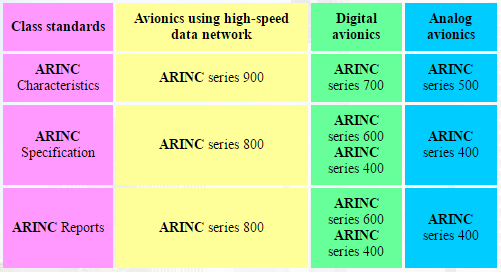The (statistical) design of experiments (DOE) is an efficient procedure for planning experiments so that the data obtained can be analyzed to yield valid and objective conclusions. DOE begins with determining the objectives of an experiment and selecting the process factors for the study. 10 results for Books: design of experiments for dummies design of experiments for dummies Cancel. A DOE Handbook: : A Simple Approach to Basic Statistical Design of Experiments May 15, 2014. by Bert Gunter and Daniel Coleman. FREE Shipping on eligible orders. Design of experiments or DoE is a common analytical technique implemented to design the right testing framework. To illustrate the use of design of experiments, lets begin with web banner advertising. The nine basic rules of design of experiments (DoE) are discussed. Some of the rules include use of statistics and statistical principles, beware of known enemies, beware of unknown enemies. A guide to Design of Experiments (DOE) including components of experimental design, the purpose of experimentation, design guidelines, design process, one factor and multifactor experiments, and Taguchi Methods. Design of Experiments (DOE) with JMP. Design of experiments, or DOE, is a practical and ubiquitous approach for exploring multifactor opportunity spaces, and JMP offers worldclass capabilities for design and analysis in a form you can easily use. Read and Download Design Of Experiments For Dummies Free Ebooks in PDF format EIGHT PRINCIPLES OF DESIGN THE EVOLUTION OF FASHION EIGHT PRINCIPLES OF CREATIVITY Six Sigma For Dummies, 2nd Edition. By Craig Gygi, Bruce Williams, Neil DeCarlo, Stephen R. How many factors you want in your experiment guides you in choosing the right experimental design. 2 k factorial experiments work best when you have between two and five Xs. In truth, a better title for the course is Experimental Design and Analysis, and that is the title of this book. Experimental Design and Statistical Analysis out my own experiments and analyzed the results of other peoples experiments in a wide variety of settings. With a randomized block design, Using the participant as his own control is desirable in some experiments (e. , research on learning or fatigue). But it can also be a problem (e. , medical studies where the medicine used in one treatment might interact with the medicine used in another treatment). Statistics For Dummies (For Dummies. Are you new to design of experiments (DOE) and not sure where to begin? StatEase offers training, articles, books, software, online tutorials, newsletters, FAQs and DOE Resources, consulting services, and technical support to get you started. Design of experiments for dummies keyword after analyzing the system lists the list of keywords related and the list of websites with related content, in addition you can see which keywords most interested customers on the this website Experimental design (also referred to as DOE design of experiments) is a rigorous method, regarded as the most valid and unequivocal standard for testing a hypothesis. Luckily, a little practice goes a long way. Design of Experiments in R Prof. Ulrike Grmping Beuth University of Applied Sciences Berlin Design of experiments (DOE) is not as widely applied in industry as it should be because it appears complex and confusing to newcomers. In reality, most test performed are onefactor twolevel experiments that show how a system, product, or process will. Design of Experiments (DOE) is a scientific approach in which purposeful changes of inputs (factors) to a process are made to determine the corresponding changes in the outputs (responses). In this module, you will learn basic concepts relevant to the design and analysis of experiments, including mean comparisons, variance, statistical significance, practical significance, sampling, inclusion and exclusion criteria, and informed consent. Probably the commonest way to design an experiment in psychology is to divide the participants into two groups, the experimental group, and the control group, and then introduce a change to the experimental group and not the control group. Design of Experiments For Dummies by Willy Vandenbrande D espite all the efforts by specialists in quality and statistics, design of experiments (DoE) is still not applied as widely as it could and should be. Design of experiments (DOE) is an approach used in numerous industries for conducting experiments to develop new products and processes faster, and to improve existing products and processes. When applied correctly, it can decrease time to market, decrease development and production costs, and improve quality and reliability. Design of Experiments (DOE) is a methodology that can be effective for general problemsolving, as well as for improving or optimizing product design and manufacturing processes. Specific applications of DOE include identifying proper design dimensions and tolerances, achieving robust designs. The design is the structure of any scientific work. It gives direction and systematizes the research. Different types of research designs have different advantages and disadvantages. The correct bibliographic citation for this manual is as follows: SAS Institute Inc. JMP 9 Design of Experiments Guide. Design of experiments (DOE) is a systematic method to determine the relationship between factors affecting a process and the output of that process. In other words, it is used to find causeandeffect relationships. This information is needed to manage process inputs in order to optimize the output. The design of experiments (DOE, DOX, or experimental design) is the design of any task that aims to describe or explain the variation of information under conditions that. of all modern books on the design of experiments. It is, however, difcult for mere mortals to comprehend and has been debated and discussed since it appeared (see, for example, Kempthorne 1966). Welch (1990) presents a fairly general method for constructing randomization tests. More about Single Factor Experiments 3. Randomized Blocks, Latin Squares 4. span In this video you will learn what a Design of Experiment (DOE) is and isn't while also learning what the 3 most popular types of DOEs are. Lesson 1: Introduction to Design of Experiments. 1 A Quick History of the Design of Experiments (DOE) 1. 2 The Basic Principles of DOE; 1. 3 Steps for Planning, Conducting and Analyzing an. The article focuses on the importance of experimental designs. Despite all the efforts by specialists in quality and statistics, design of experiments (DoE) is still not. Experiments can have only one independent variable. If you want to know the effect of caffeine (or extra sleep or improved training) on your race time, you would. The correct bibliographic citation for this ma nual is as follows: SAS Institute Inc. JMP 10 Design of Experiments Guide. 2 Design and Analysis of Experiments by Douglas Montgomery: A Supplement for Using JMP across the design factors may be modeled, etc. Software for analyzing designed experiments should provide all of these capabilities in an accessible interface. INTELLIGENT DESIGN FOR DUMMIES John H. Calvert, BA (geology), JD, Managing Director of Intelligent Design network, inc. August 11, 2006 Most scientists use direct observation and repeated experiments to test a proposed explanation for some phenomena. Why does an apple fall from a tree? Maybe it is blown down by Design of Experiment Basics. With most true experiments, the researcher is trying to establish a causal relationship between variables, by manipulating an independent variable to assess the effect upon dependent variables. In the simplest type of experiment, the researcher is trying to prove that if one event occurs, a certain outcome happens. factorial design requires m experiments The most used method is 2. design If we analyze 2 values (or options) for 3 reaction. 3 8 experiments need to be run A m. number of values for each reaction Design of experiments (DOE) is not as widely applied in industry as it should be because it appears complex and confusing to newcomers. In reality, most test performed are onefactor twolevel experiments that show how a system, product, or process will Design Of Experiments For Dummies A Beginners Guide. Page 1 of 9 By Willy Vandenbrande Published: 21 Feb 07 Despite all the efforts by specialists in quality and statistics, Design Of Experiments (DOE) is and of Design of Experiments Using the Taguchi Approach: 16 Steps to Product and Process Improvement published (January 2001) by John Wiley Sons, New York. He is a fellow of the American Society for Quality and an adjunct experiments is applicable to both physical processes and computer simulation models. Experimental design is an effective tool for maximizing the amount of information gained from a study while minimizing the amount of data to be collected. Online shopping from a great selection at Books Store. The conventional experiment design proceeds usually so that changes are made one variable at time; i. first the first variable is changes and its effect is measure and the same takes place for the second variable and so on. Design of Experiments (DOE) Tutorial. Design of Experiments (DOE) techniques enables designers to determine simultaneously the individual and interactive effects of many factors that could affect the output results in any design. DOE also provides a full insight of interaction between design elements. Jianbiao (John) Pan Minitab Tutorials for Design and Analysis of Experiments Page 3 of 32 Example 1 OneWay ANOVA In many IC manufacturing, a plasma etching process is widely used. understand the issues and principles of Design of Experiments (DOE), understand experimentation is a process, list the guidelines for designing experiments, and Design of Experiments is one the most powerful, yet least understood and used, of the improvement tools available to manufacturing organizations. The financial payback period achieved from using DOE, especially screening experiments, is often measured in months and weeks, not years. Experiments, remember, are one of the key components of the scientific method, which is a set of procedures that scientists follow to gain knowledge about the world. Why use Statistical Design of Experiments? Choosing Between Alternatives Selecting the Key Factors Affecting a Response Response Modeling to: Hit a Target Reduce Variability Maximize or Minimize a Response Make a Process Robust (i. , the process gets the right results even.



.jpg)







